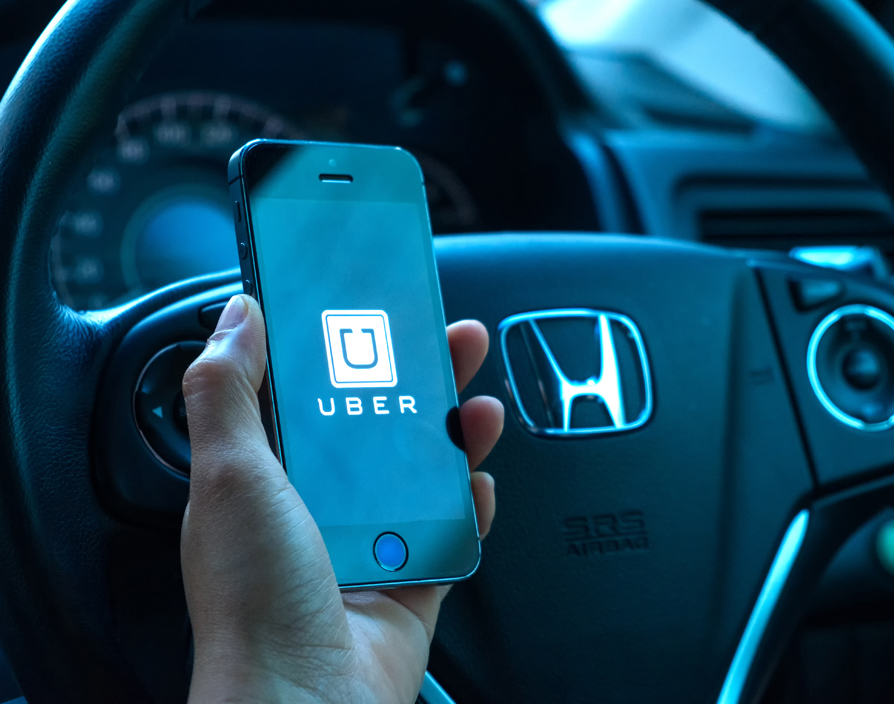Uber is on a journey to clean up its reputation. Ever since Dara Khosrowshahi took over as CEO of the ride-hailing enterprise from ousted founder Travis Kalanick in August 2017, he’s been busy trying to sway the public’s perception of the business. So far his tenure has been devoted to changing the company’s toxic and sexist culture, settling a lawsuit with Alphabet’s autonomous vehicle division Waymo and leading Uber through an IPO. However, his latest bid to ban users with bad ratings may end up blowing up in his face, according to some critics.
In the past, drivers getting graded poorly have run the risk of deactivation. On Wednesday May 29, Uber announced that it is rolling out similar measures for users in the US and Canada. “Riders may lose access to Uber if they develop a significantly below-average rating,” said Kate Parker, head of safety brand and initiatives at Uber, in a blog post.
Users won’t be banned right away but will be warned and given a chance to redeem themselves before being banished to the wilderness of zero access to the ride-hailing platform. The move will be accompanied with a campaign to encourage polite behaviour like avoiding leaving rubbish in the car, being disorderly and requesting that drivers exceed the speed limit. It’s unclear exactly how appalling a rider’s rating has to be before they’re kicked off the platform although Uber has stated that users with a “significantly below average rating” will be removed.
One reason for Uber venturing down this road could be that the ride-hailing unicorn is attempting to fix some of the fundamental issues with the gig economy. “A common criticism is that in monetised platforms sharing does not necessarily mean caring and the fact there is a monetary transaction between the Uber user and the driver might justify the lack of interest from the user in having a cordial interaction,” says Rodrigo Perez-Vega, doctor of marketing and reputation at Henley Business School, when speaking with Elite Business. “Uber drivers with low ratings are already banned from using the platform, which addressed the service provider end of it and now it seems that they’re taking a step forward to also include the service users.”
Fixing this discrepancy between the drivers and the users could also be a way for Khosrowhahi to woo the former. “It is no secret that the relationship between Uber and its drivers is poor, so this could well be a strategy by Uber to attempt to build bridges in their problematic relationship,” Andy Barr, founder and managing director of 10 Yetis, the PR agency, tells Elite Business.
Indeed, the reaction from drivers has been positive. “Holding riders accountable for their behaviour on the Uber platform is an important safety measure to protect drivers as well as fellow riders who may book shared rides,” said Moira Muntz, spokesperson for the Independent Drivers Guild, in a statement. “While most riders are respectful, banning riders who threaten driver safety, spew racist rants and disrespect or damage our vehicles is the right thing to do. For too long there has been one-sided accountability and this is a positive step toward correcting that.”
However, some of the experts we spoke with fear this move could end up hurting the brand. “This will have a really negative impact upon consumers perceptions of Uber’s brand,” argues Martin Newman, retail and consumer expert. “It smacks of a lack of transparency. It’s like a retailer with rating and reviews removing all the negative reviews. Consumers see through this. It will also generate a lot of negative word of mouth from the customers who have been banned.”
It’s easy to see why he’s reached that conclusion. As Uber announced its plans, the Twitterverse seemingly blew up with references to the Black Mirror episode Nosedive where every interaction everyone has is rated by everyone else and the lower your rating becomes the less access you get to services like car rentals, getting medical treatments or even entering your place of work.
Alex Kantrowitz, senior technology reporter at BuzzFeed, tweeted: “Seems like we’re not too far from that Black Mirror society where our rankings define what services we can use and where we can live.”
Another criticism is the perceived lack of transparency as to what actually makes up a good rider. “What’s most interesting about the scheme is that it relies on honest drivers and even though a bad score shouldn’t be given because – for example – the passenger didn’t tip very well or even if they weren’t very chatty towards the driver, it could still happen,” Barr argues. “There are many factors at play here and, whilst it will encourage passengers to act in the appropriate manner, we can only hope that drivers will too.”
Will this backlash end up leaving a scar? It depends on who you ask. For instance, Newman says: “There’s already a growing and significant number of consumers who won’t use Uber and don’t like the brand for a host of different reputation related reasons, this will only exacerbate the issue and lead to more vocal criticism, which in turn will impact demand.”
Comparatively, Perez-Vega doesn’t read too much into the backlash so far. “Change tends to be resisted, so unless a clear advantage is perceived by the user from it I think there will be some complaints from users,” he says. “I think, however, it is unlikely that the backlash becomes severe as most users are already using more than one app to fulfil their transportation needs.”
As so often in the tech scene, only time will tell if a new feature to a service will end up being successful or not. ![]()
Share via:








































